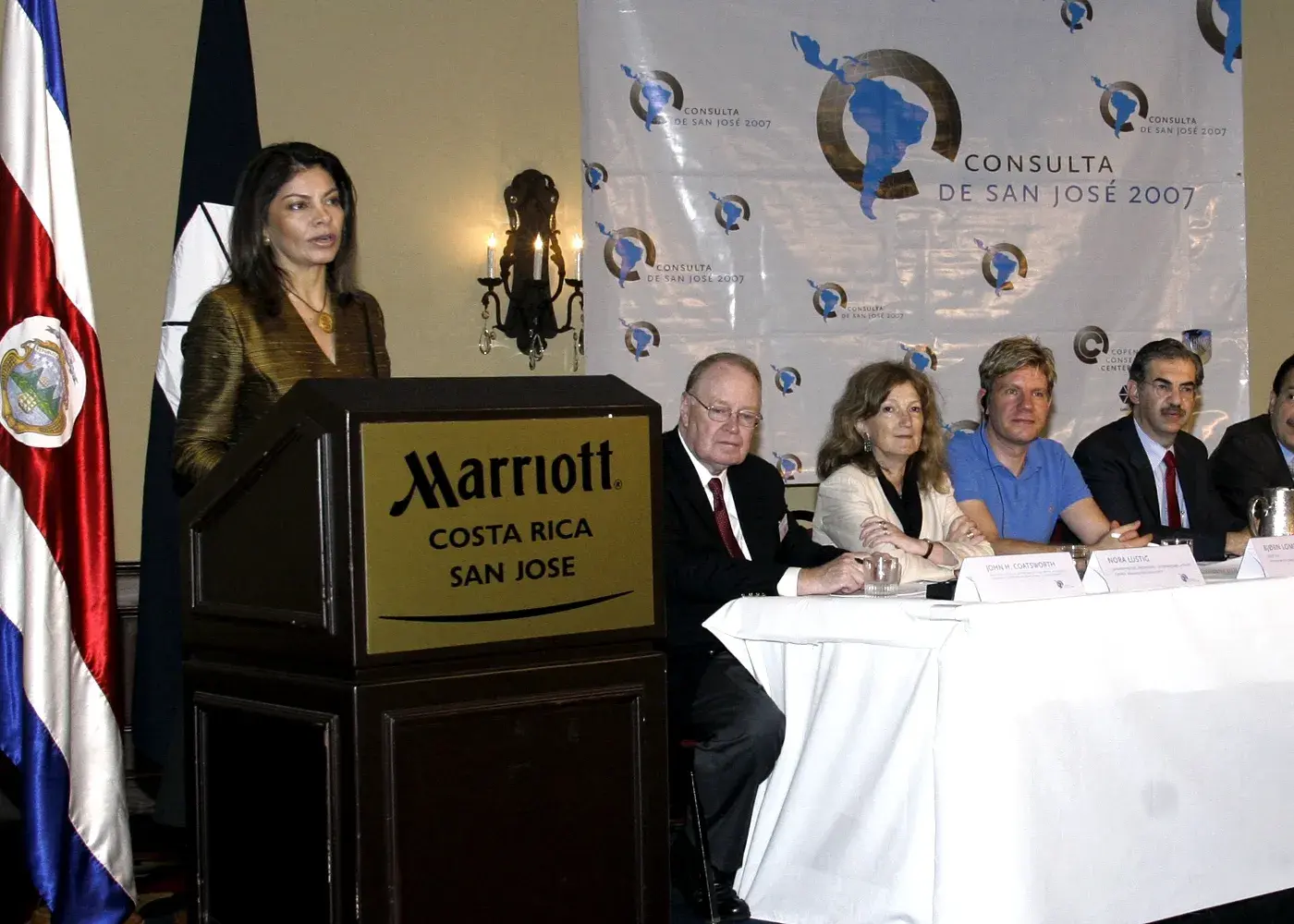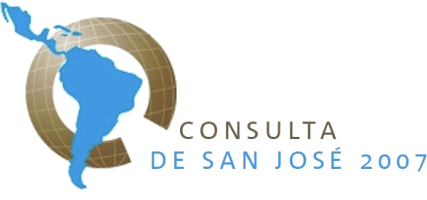Consulta de San José background
When it comes to the big challenges, wouldn't it be better to implement those solutions that give the highest return than to do the things that only seem or feel good?

Consulta de San José 2007 – the Latin American version of the Copenhagen Consensus – focused on some of the biggest challenges facing Latin America and the Caribbean today, and explored the best solutions to these challenges. The solutions and their costs and benefits was assessed and ranked by an expert panel, based on comprehensive background analyses prepared specifically for the Consulta de San José 2007.
Reconstruction and transformation are occurring across Latin America and the Caribbean. A ‘pink tide' has brought new and unorthodox politicians centre stage. Economic reforms are being implemented in the wake of the economic crisis of the eighties and nineties. The region has benefited from increasing export revenues and volumes due to record high commodity prices and increased growth globally. The Latin American economies are doing better now than they have in a long time.
However, the region still has the world's biggest gap between rich and poor. A quarter of the population is still living on less than US$ 2 a day. Fifty million cope on less than US$ 1 a day. Perceptions of corruption and inefficiency are undermining public institutions, and a huge portion of the region's inhabitants lack access to basic healthcare. Investments in infrastructure are in decline, making social transformation extremely difficult.
The Ten Challenges
Based on a survey conducted by the Research Department at the IDB, in which 1.800 Latin Americans and Caribbeans were asked to identify what they believed to be the main challenges facing their countries, the Latin American public selected the following list of the ten biggest challenges facing Latin America and the Caribbean today:
- Democracy
- Education
- Employment/Social Security
- Environment
- Fiscal Problems
- Health
- Infrastructure
- Poverty/Inequality
- Public Administration and Institutions
- Violence/Crime

The Expert Panel
Eight outstanding economists constituted the expert panel of the conference. During the three days, the expert panel discussed and assessed the solutions addressing the ten challenges. The panel met in closed sessions in order to stimulate open-minded discussion among the group. The expert panel presented a ranked list of the solutions based on an assessment of the costs and benefits.
The ranking and final remarks of the expert panel was presented at a press conference on the fourth day of the conference.
The Papers
The 10 Solution Papers
The aim of the Solution Papers was to present empirically based cost-benefit-analysis of high academic standards within each challenge. We aimed for the highest possible degree of consistency between the challenge papers. The purpose was to make solutions from one challenge and solutions from another challenge as easily comparable as possible, through one commonality; the b/c ratio. Each paper was written by a leading economic specialist within the field of the challenge, who is affiliated to a university, a research institution, international organization or the like. The aim was to provide the Expert Panel with the best empirically based background as possible, which would aid the panel in selecting the best solutions to the most pressing challenges facing Latin America today.
The Alternative View Papers
In order to secure solid background information on each challenge, an Alternative View Author was asked to comment on each Solution Paper. The Alternative View Papers consisted of a review of the Solution Paper and possibly an additional proposal for a solution. These papers made sure that the Expert Panel was presented with all relevant information available on a given challenge and that no solutions were left out.
The Method
Cost and benefit estimates of solutions to the challenges
The Solution Papers and the Alternative View Papers delivered the best available cost and benefit estimates on the proposed solutions. The papers provided an overview and review of existing literature, presenting the economic costs and benefits together with descriptions of strengths and weaknesses in the methodology. The Solution Papers provided a very interesting input to the on-going debate on the challenges of Latin America and the Caribbean.
The economic evaluation of the solution was the core of the assessment. All up-to-date major economic estimates of costs and benefits were used. When describing the costs, the focus was on quantifying the actual price of implementing the solution, thus including the costs involved in the entire process from production to application of the solution. When describing the benefits, the focus was on quantifying the social costs that are saved and the social and economic gains that are obtained if the solution is implemented. Estimated costs and benefits included the extent to which side effects have been included or neglected in the individual estimates. Further information was provided regarding the possible size of the omissions. The main assumptions underlying the methodology used to measure the impact of the challenge and accompanying solution was also listed. Examples of such assumptions are statistical value-of-life (DALY), high and low discount rate, time horizon, and the underlying baseline.

